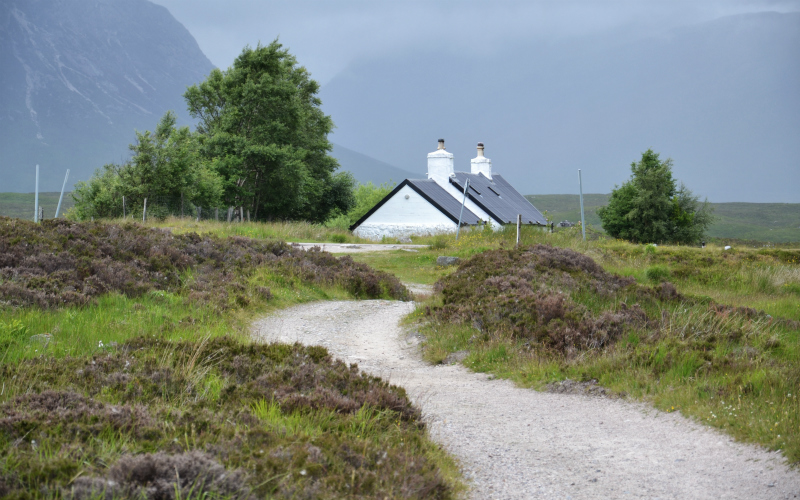
The Land Reform (Scotland) Act 2016 made a number of changes to the way land ownership is, and will be, regulated. One of those changes was the introduction of a Register of Persons Holding a Controlled Interest in Land. Last week, the Scottish Government published draft Regulations setting out how they propose that this new Register will operate in practice.
The Government’s stated purpose in setting up this new Register is to “increase public transparency in relation to individuals who have control over decision making in land” with the aim of “empowering people and communities to influence how Scotland’s land is owned and managed”. In other words, the Register will make it easier to identify exactly who the decision makers are in relation to land, where that is not already clear from the Land Register or the General Register of Sasines.
The Regulations will apply to both land owners and tenants under long leases (those with a term of over 20 years). That is, those whose interests in land currently require registration in the Land Register. While the identity of the owner of land or the tenant under a long lease is already a matter of public record as a result of this existing registration, the new Register will go one step further – it is not only the owners and tenants themselves who will be identified, but now also those influencing them.
Broadly, the Register will require additional information to be disclosed where the owner or tenant is a partnership, a trust, an unincorporated association, an overseas legal entity or where a contractual or other arrangement is in place giving a third party significant influence or control over the relevant land. Information about the control of UK companies that own or lease land in Scotland is already publically available via the Companies House website and would not be duplicated in the new Register.
Disclosure of information to the new Register will not be a pre-condition of title registration in the Land Register, however land owners, tenants and those controlling them will nevertheless be under a duty to provide information to the Register. Failure to do so will be a criminal offence, with a maximum fine of £5,000. A 6 month transitional period is however proposed from the date on which the new Register is to come into force (currently set as 1 April 2021) before these criminal offence provisions will become enforceable.
There will be a narrow exemption available for any individual who can show that the inclusion of information about them in the Register would put them at risk of violence, abuse or the threat of violence or abuse or intimidation (for example, a victim of domestic abuse who does not wish their name and address to be published). This will be known as a ‘security declaration’ and, if accepted, will mean that no information about that person will be disclosed.
It is proposed that the Register would contain an entry for each piece of land owned or held on a long lease. The owner or tenant of that land will be the “recorded person” in relation to it; any person with a controlling interest over that person will be an “associate”. The Register would contain:
- The name and address of the recorded person
- The title number or an identifiable description of the land
- The capacity in which the recorded person owns or leases the land
- The same details in relation to each associate (or, where appropriate, a security declaration).
The first two of these pieces of information are already publically available from a search of the Land or Sasine Register; the last two will be newly publically available once the Register is up and running.
How will this work in practice? Each piece of land will need to be considered separately, depending on how the title is held but two common examples are as follows:
- Partnership – Title to the land is registered in the name of Individual A (the recorded person). Individual A in fact holds the land for Partnership X. Individuals A, B and C are the partners in Partnership X. The new Register will now disclose (i) that Individual A holds the land on behalf of Partnership X and (ii) the identities of Individuals B and C as associates. It should be noted that a former partner may still be considered an associate and require to be disclosed on the Register if they continue to have influence over business decisions – a not uncommon scenario in family farming businesses where perhaps a parent has resigned from the partnership but remains involved in the day to day decision making.
- Trust – Title to land is registered in the names of Trustee A and Trustee B (the recorded persons), in trust for Trust X. Trustee C is assumed as a new trustee. The new Register will disclose the identity of Trustee C as an associate. The Register will not disclose information relating to beneficiaries where they have a purely financial interest in the Trust, but beneficiaries may be classed as associates if they also have a role in the governance or control of the Trust.
The consultation will be open for responses until 8 November 2018 and all those with an interest are encouraged to provide feedback on the draft Regulations. The consultation paper, draft Regulations, explanatory notes and response form can all be found here https://consult.gov.scot/land-reform-and-tenancy-unit/transparency-in-land-ownership/
For further information and advice, please contact a member of the Land & Rural Business Team.
